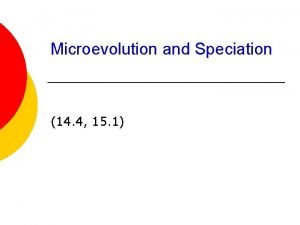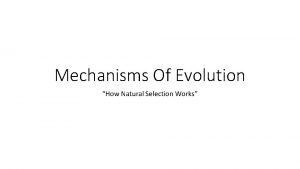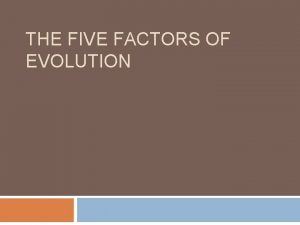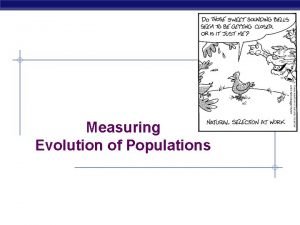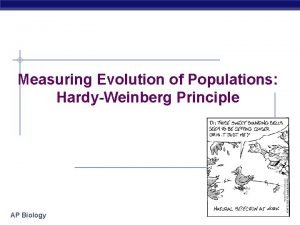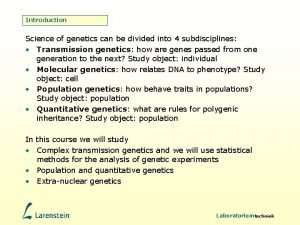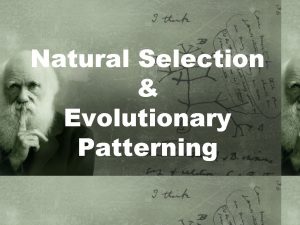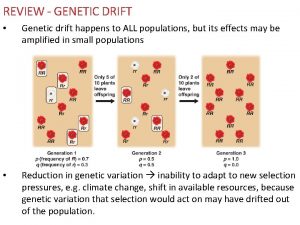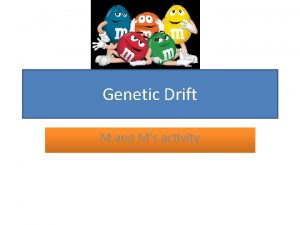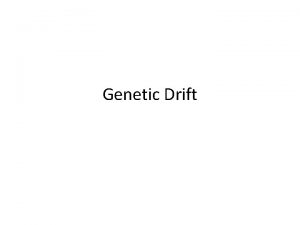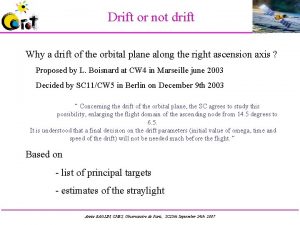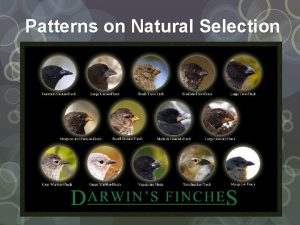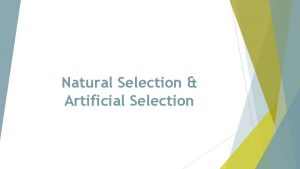Patterns of Natural Selection Genetic Drift Ch 17













- Slides: 13

Patterns of Natural Selection & Genetic Drift Ch 17. 2

State Standard n n 8 a. Students know how natural selection determines the differential survival of groups of organisms. 8 c. Students know the effects of genetic drift on the diversity of organisms in a population.

Objectives: 1. 2. What are the possible patterns that result from natural selection? What are genetic drifts and how can they change populations?

Natural Selection is Limited n The environment does the selecting. ¡ n This limits the process Natural Selection acts only to change the relative frequency of alleles in a population. ¡ Does not create new ones, or delete those that are not adaptive.

Natural Selection is Limited n Natural selection does not act directly on genes. ¡ n n Only allows individuals with favorable traits to pass them on. It acts by indirectly removing unsuccessful phenotypes from a population. Only characteristics that are expressed can be targets of natural selection.

Patterns of Natural Selection n Three major patterns are possible in the way that natural selection affects the distribution of polygenic traits over time. 1. 2. 3. Directional Selection Stabilizing Selection Disruptive Selection

Directional Selection n The peak of normal distribution moves in one direction along its range, shifting toward one end (or the other). ¡ Eliminates one of the extremes. Key Food becomes scarce. Low mortality, high fitness High mortality, low fitness

Stabilizing Selection Bell curve becomes narrower, tightening up the “normal” range. ¡ Eliminates individuals at both extremes. Stabilizing Selection Key Percentage of Population n Low mortality, high fitness High mortality, low fitness Birth Weight Selection against both extremes keep curve narrow and in same place.

Disruptive Selection n Bell curve becomes disrupted, pushing it apart into two separate peaks. ¡ Eliminates the average or middle phenotype values, and favors extreme forms of a trait. Disruptive Selection Low mortality, high fitness High mortality, low fitness Beak Size Population splits into two subgroups specializing in different seeds. Number of Birds in Population Key Number of Birds in Population Largest and smallest seeds become more common. Beak Size

Genetic Drift n n n The random change in allele frequency in a population. Can be significant in small populations. Nature is unpredictable

Causes: (random changes in allele frequency) n Few organisms in population ¡ Parents having only a few offspring, so they don’t give off alleles n Only a fraction of offspring live to maturity and have offspring n Events of Nature ¡ n Fire, Flood, physical separation Mutations

Bottleneck Effect & Founder’s Effect n n n Bottleneck - A few organisms survive an event to pass on traits Founders Effect – A few organisms leave and begin a new population, pass on traits Human influence often leads these

Examples:
 Genetic drift vs gene flow vs natural selection
Genetic drift vs gene flow vs natural selection Mechanisms of evolution
Mechanisms of evolution Founder effect definition biology
Founder effect definition biology Genetic drift
Genetic drift Gene flow vs genetic drift
Gene flow vs genetic drift Similarities
Similarities Natural selection vs artificial selection
Natural selection vs artificial selection Difference between continuous and discontinuous variation
Difference between continuous and discontinuous variation Natural selection vs artificial selection
Natural selection vs artificial selection Natural selection vs artificial selection
Natural selection vs artificial selection Genetic drift definition
Genetic drift definition What is gene flow and genetic drift
What is gene flow and genetic drift Genetic drift vs gene flow
Genetic drift vs gene flow Genetics
Genetics
